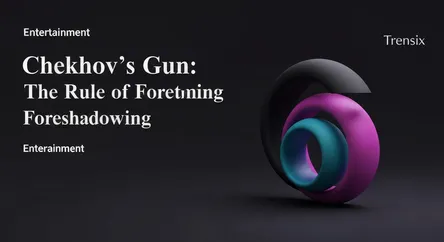Entertainment
Chekhov's Gun: The Rule of Foreshadowing

Discover Chekhov's Gun, the classic narrative principle that every detail in a story must have a purpose. Learn how it creates satisfying foreshadowing.
What is it?
Chekhov's Gun is a narrative principle stating that every element in a story must be necessary, and irrelevant elements should be removed. Coined by Russian playwright Anton Chekhov, the rule is famously summarized as: "If in the first act you have hung a pistol on the wall, then in the following one it should be fired. Otherwise don't put it there." Essentially, it's a dramatic contract with the audience, suggesting that if an object or detail is given prominence, it will play a significant role later on. This concept is a cornerstone of effective foreshadowing and narrative economy, ensuring a tight and purposeful plot.
Why is it trending?
Chekhov's Gun is a perennial topic in online film and TV discussions. Fans and critics frequently invoke the principle when analyzing new releases, speculating on plot twists, or critiquing storytelling choices. Its popularity is fueled by video essayists and social media communities dedicated to breaking down narrative structures. In an era of complex, long-form series like those on streaming platforms, viewers actively look for these narrative seeds, making the identification of a potential 'Chekhov's Gun' a popular and engaging form of fan participation and media analysis.
How does it affect people?
For audiences, understanding Chekhov's Gun enhances the viewing experience by creating anticipation and satisfaction. When a seemingly minor detail from an early scene becomes crucial to the climax, it delivers a powerful narrative payoff. For writers and filmmakers, it serves as a crucial tool for crafting compelling stories, forcing them to be deliberate with every detail they include. It encourages the creation of more cohesive and rewarding narratives, while also setting up expectations that, if subverted cleverly, can lead to surprising and memorable plot twists. It fundamentally shapes how stories are told and consumed.